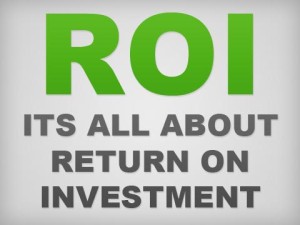 The mortgage industry, like any other industry, has its own unique terminology that no dictionary or thesaurus can help you with. Among those unique terms are the words “Loan Discount Points,” and not understanding what they are and the role they play in a purchase or refinance transaction can have a significant impact on your finances.
The mortgage industry, like any other industry, has its own unique terminology that no dictionary or thesaurus can help you with. Among those unique terms are the words “Loan Discount Points,” and not understanding what they are and the role they play in a purchase or refinance transaction can have a significant impact on your finances.
In their most basic definition, Loan Discount Points are prepaid interest. You are probably wondering why a lender would charge a borrower prepaid interest. Bear with me while I attempt to explain it. Lenders loan money so they can earn interest. A Lender will charge loan discount points any time the lender discounts the interest it could otherwise earn. In any given interest rate environment a lender will determine its target interest rate, its rate of return. Occasionally, a borrower will want to pay a lower interest rate than the lender’s target interest rate. The obvious benefit to the borrower is a lower monthly mortgage payment that results from a lower interest rate. When this occurs, Lenders have two choices: 1) Tell the borrower tough luck, or 2) Give the borrower options. They decided to give the borrower options.
So Lenders developed a formula to allow them to offset the interest a lender loses when a borrower wants to pay a lower interest rate than a particular lender has as its target interest rate based on a specific set of borrower criteria and qualifiers. The borrower criteria and qualifiers are beyond the scope of this post.
 Loan discount points are expressed as a percentage of the loan amount being applied for. One point is equal to 1.00% of the loan amount. For example, one point on a $300,000 mortgage would be $3,000. Generally, one point in fee will purchase a reduction in interest rate of approximately 0.25% (e.g., 5.00% vs 4.75%). However, loan discount points can be charged in amounts other than increments of 1.00% (e.g., 0.125%, 0.25%, 0.375, 0.75%, etc.).
Loan discount points are expressed as a percentage of the loan amount being applied for. One point is equal to 1.00% of the loan amount. For example, one point on a $300,000 mortgage would be $3,000. Generally, one point in fee will purchase a reduction in interest rate of approximately 0.25% (e.g., 5.00% vs 4.75%). However, loan discount points can be charged in amounts other than increments of 1.00% (e.g., 0.125%, 0.25%, 0.375, 0.75%, etc.).
Whenever a borrower pays loan discount points to a lender the borrower is prepaying interest the lender hasn’t yet earned.
Let me illustrate. Let’s say a lender offered you a 30-year fixed interest rate mortgage of $300,000 at 5.00% with zero points. That is the interest rate that generates the lender’s target return for a given set of criteria. You decide you would rather secure 4.75% and the lender explains that to obtain that interest rate it will cost you one point in fee.
 From the lender’s perspective they stand to make $15,000 interest per year at 5.00% ($300,000 x 5.00%) versus $14,250 at 4.75% ($300,000 x 4.75%). That is a loss of $750 per year in interest income. The lender does not want to give up that $750 each year so the lender charges the borrower one point, or $3,000, to compensate for the lower interest rate. The lender is willing to accept $3,000 from the borrower today and will forego $750 each year because the lender can make more money putting $3,000 to work immediately than putting $750 to work each year. The lender is essentially collecting the first four years lost interest upfront.
From the lender’s perspective they stand to make $15,000 interest per year at 5.00% ($300,000 x 5.00%) versus $14,250 at 4.75% ($300,000 x 4.75%). That is a loss of $750 per year in interest income. The lender does not want to give up that $750 each year so the lender charges the borrower one point, or $3,000, to compensate for the lower interest rate. The lender is willing to accept $3,000 from the borrower today and will forego $750 each year because the lender can make more money putting $3,000 to work immediately than putting $750 to work each year. The lender is essentially collecting the first four years lost interest upfront.
Why is the lender willing to do that? Fannie Mae did a study some time ago and determined that, on average, a 30-year fixed rate loan is paid off within 4.3 years, whether it is the result of the loan being refinanced or the property being sold. That means that if you choose to pay a discount point and you keep the loan longer than 4 years the lender will begin losing $750 per year from the fifth year of the loan until the loan is paid in full. If, however, you choose to pay a discount point and you pay the loan in full in less than 4 years, regardless of the reason, the lender has already collected the first four years of interest up front and you have paid interest you didn’t have to pay. The lender is betting that you won’t have the loan more than 4 years.
Unfortunately, the decision of whether or not YOU should pay points to secure a particular interest rate is not as simple as that. If you are considering paying points call us to schedule a time to discuss your specific situation and we will help you determine whether paying points is in your best interest or the lenders.
Leave a Comment